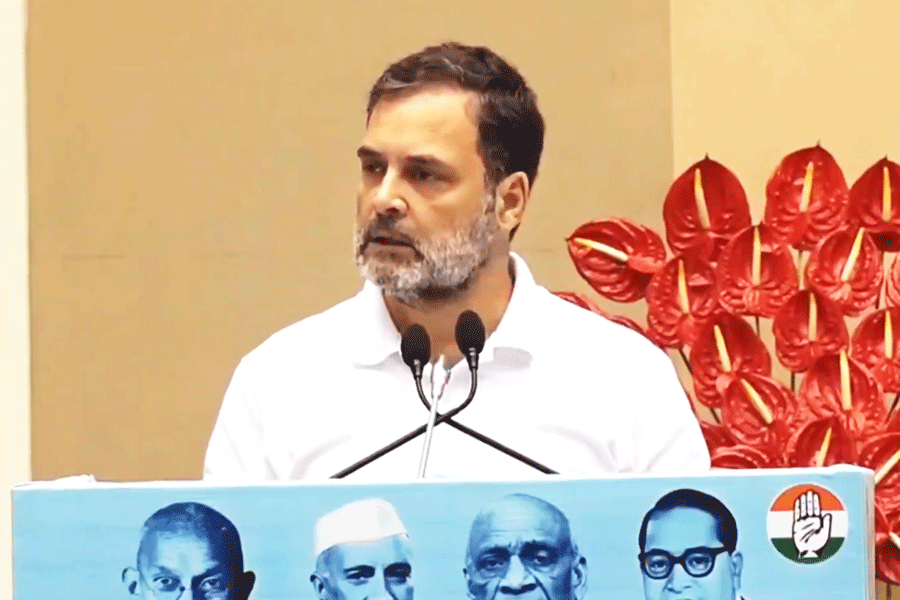 |
The year is 1805. The lofty values of the Enlightenment have just received a jolt with Napoleon’s proclamation of himself as the Emperor of the French in May 1804, thus triggering off the long Napoleonic wars, which would replace France with Britain as the imperial power. As the war rages in Europe, Beethoven’s Eroica (which means ‘heroic’) is first performed on April 7, 1805. It is the symphony to which he had given the admiring title Bonaparte, only to tear out the first page containing that name when he heard of Napoleon’s assumption of power. “So he is no more than a common mortal! Now, too, he will tread under foot all the rights of man, indulge only his ambition; now he will think himself superior to all men, become a tyrant!” Beethoven had raged.
In this best and worst of times, the epoch of belief and incredulity, Hans Christian Andersen was born on April 2 in a poor family of the town of Odense in Denmark. He lost his father to the Napoleonic wars at the age of 11. His mother re-married soon and throughout his life Andersen would see himself as an orphan, suffering the maladies as well as enjoying the attendant benefits of such a self-image. It would make him forever insecure, hypersensitive to praise and blame, while inspiring the creation of such immortal foundlings as the Little Mermaid, the Little Match Girl and the Ugly Duckling, who is “bitten, pecked, and teased by both ducks and hens” before his grand identity as a swan is revealed.
Gangly and awkward, Andersen was in a way dramatizing his life story in “The Ugly Duckling”. His proletarian origins put him at a social disadvantage, which he was determined to neutralize with his talent. After fighting initial disappointments, he succeeded splendidly in his mission — so much so that his later life, or at least, its trappings, quite resembled the fairy stories he was writing. Being a favourite of Europe’s aristocrats, he spent holidays in palaces, walked arm in arm with the grand duke at the Ettersburg Castle in Weimar, conversed with kings and queens, as also with princes of the artistic world like Victor Hugo, Heinrich Heine, Mendelssohn, Schelling and Dickens. Yet ambition, which had landed him in the glittering drawing rooms of royalty, came with the same Giddiness who attends upon the Ice Maiden (or Death) in Andersen’s tale of that name. The slightest criticism — while he was lionized outside Denmark, it seems that his countrymen were ever ready to slight him — brought back the old fears of failure, rejection, and poverty. The mad grandfather, whom he had visited regularly in the local asylum as a child, was a living presence.
Andersen made exquisite paper-cuts as graphic parallels to his stories. They were usually of the kind where a piece of paper is folded in half and designs are cut into the strip so that when it is unfolded, there are mirroring patterns on each side, creating a whole. As in the opened paper-cut, the right became the left and the left became the right with a swish of the hand, so in the real world too, things transformed into their opposites with the blink of an eye. If Napoleon, the great champion of equality, could morph into a tyrant, then, in an equally dramatic reversal, the famous writer, moving around in hallowed circles, could go back to being the forgotten rag-a-muffin standing on the wrong side of the lighted window, begging to be let in.
But this fear — of the free fall to oblivious death — did not corrupt him, as it does most. Instead it made him celebrate all that comes gratis — the dancing crocuses in the garden (“Little Ida’s Flowers”), the swallow with her “quiwit! quiwit!” (“Thumbelina”), the broken needle found in the gutter (“The Darning Needle”), the imagined life of imagined toys, and most of all, god’s grace. The child’s world is without death. For the adult-child — the artist — death is a friend, the brother of Dustman, who is himself the storyteller, the dream-maker. Little Hialmar gets a story from the Dustman for each day of the week — stories in which the boy’s familiar world is made more vivid than reality (“The Dustman”). On Sunday, the day god rested after work, the Dustman too refuses to ply his trade. He lifts Hialmar onto the window sill and asks the boy to look: “‘There is my brother, the other Dustman. He is called Death. You see, he is not frightening at all, as he seems in picture books. Look at his beautiful silver embroidered uniform and his fine black cloak floating out behind him. See how he gallops!’... ‘Death is a most beautiful Dustman,’ said Hialmar. ‘I am not afraid of him.’’’










